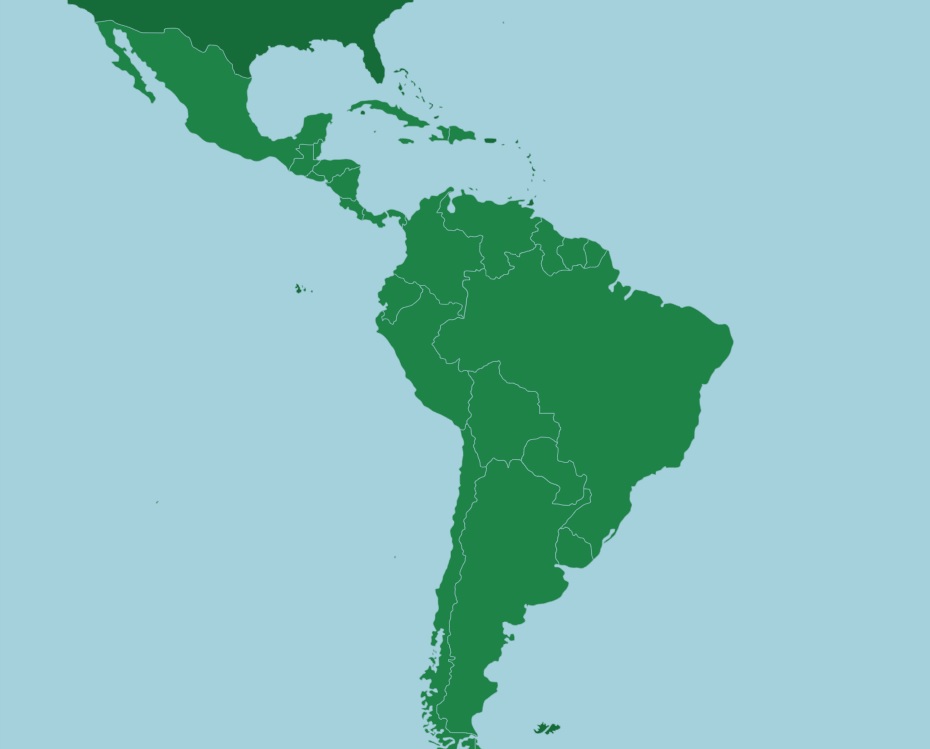Latin America’s weight in the world economy has declined sharply in the last decade, while Asia’s weight, specifically China’s, has been gaining ground.
One of the main causes of Latin America’s clout decline is a severe decline in Brazil’s economic output during the last ten years.
The International Monetary Fund (IMF) indicates that the economies of Latin America and the Caribbean represent 5.26% of the world’s Gross Domestic Product (GDP), according to the IMF’s latest report, published in April.

A decade ago, the region’s combined GDP accounted for 7.95% of the world’s GDP. In other words, the importance of Latin America and the Caribbean in the world economy has dropped by 33.85% in just ten years.
According to the IMF, Brazil’s GDP declined from US$2.46 trillion in 2012 to US$1.83 trillion in 2022. Thus, its share of all goods and services produced worldwide went from 3.27% to 1.76%. In other words, it plummeted by 46%.
Mexico, Latin America’s second-largest economy, accounts for 1.16% of the world’s goods and services output, a drop of 34.25% over the last ten years.
And while Brazil, Mexico, and Latin America, in general, saw their contribution to the global economy drop, China’s advanced, currently contributing 19.17% to global GDP, up 68.6% compared to a decade ago.
Bloomberg Línea surveyed each major Latin American economy’s GDP and its relevance to the global economy, taking into account the data published by the IMF in April.
GDP PER COUNTRY
Brazil is the region’s largest economy (with US$1.83 trillion GDP), followed by Mexico (US$1.32 trillion), with Argentina in third place, with a GDP in 2022, according to the IMF, of US$564.27 billion, contributing 0.54% to global GDP.
As in the case of Brazil, Argentina’s GDP is nominally lower than it was ten years ago (almost US$580 billion in 2012).
In both cases, the situation becomes even more dramatic if we consider the population growth of these years and that inflation in US dollars means that, even if the size of the economy were nominally the same, there would be a real deterioration.
The fourth-largest economy in the region is Colombia, which contributes almost US$351.28 billion, or 0.34% of the global GDP. Colombia’s nominal GDP in dollar terms is also smaller than it was ten years ago when it was almost US$371 billion.
The top five Latin American economies are rounded out by Chile, with a GDP for 2022 of US$317.59 billion, or 0.31% of global GDP.
However, in contrast to what has happened in the countries mentioned above, Chile’s GDP saw a nominal increase of 18% during the last decade, totaling US$269.37 billion in 2012, but which did not surpass dollar inflation during that time.
Outside the top five Latin American economies are the following countries, ranked in order of GDP:
- Perú: US$240.34 billion
- Ecuador: US$115.46 billion
- Dominican Republic: US$109.08 billion
- Guatemala: US$91.01 billion
- Panama: US$70.49 billion
- Costa Rica: US$65.31 billion
- Uruguay: US$64.28 billion
- Venezuela: US$49.08 billion
- Paraguay: US$41.93 billion
- Bolivia: US$41.03 billion
- El Salvador: US$30.72 billion
- Honduras: US$30.11 billion
- Nicaragua: US$15.76 billion
In addition, the Caribbean and Central American countries where neither Spanish nor Portuguese is spoken add some US$108.73 billion to the region’s GDP.
Among them, Trinidad and Tobago is the largest economy, with a GDP of US$25.34 billion.
If Puerto Rico is added as part of the region (which the IMF does not include), the US territory would add another US$116.76 billion to the region’s GDP.
LATIN AMERICA, LAGGING BEHIND THE WORLD
According to IMF figures published in April, global GDP totaled US$103.87 trillion, an increase of 38.27% over the last decade, showing that, as Latin America as a whole contracted economically, the rest of the planet grew.
The countries with the largest contribution to global GDP are the US, with US$25.30 trillion, or 24.4% of the total, and China, with US$19.9 trillion.
Japan and Germany are third and fourth place, but India is expected to move into third place by 2030.
With information from Bloomberg

